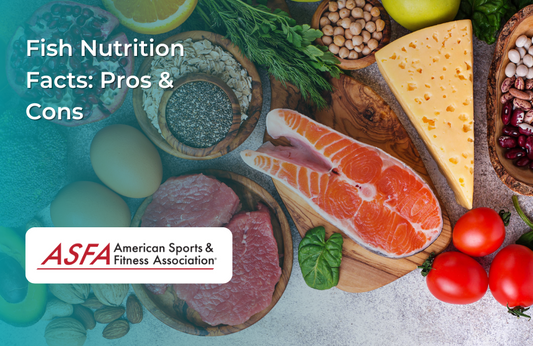When it comes to effective weight loss, incorporating compound exercises into your workout routine is one of the most efficient ways to burn calories, build muscle, and boost your metabolism. Compound exercises are movements that engage multiple muscle groups simultaneously, leading to a higher calorie expenditure during and after your workouts. By targeting large and small muscle groups, these exercises enhance your overall strength and endurance, making them an excellent choice for those aiming to lose weight and build lean muscle. Additionally, eating fewer calories can lead to fast results in shedding pounds. However, for sustainable weight loss, it is crucial to adopt a balanced and manageable healthy eating plan.
Consuming fewer calories is essential for losing weight effectively. The American Sports and Fitness Association (ASFA®) recommends six key compound exercises that can help you maximize your weight loss efforts. These exercises work across different areas of the body and offer benefits that go beyond just burning calories. By incorporating these movements into your routine, you can improve functional strength, posture, coordination, and balance while achieving your fitness goals.
1. Squats
Squats are one of the most fundamental compound exercises, engaging the quadriceps, hamstrings, glutes, and core. The beauty of squats lies in their versatility: they can be performed using just bodyweight or with additional resistance, such as dumbbells, kettlebells, or barbells, to intensify the movement.
To perform a squat, stand with your feet hip-width apart and engage your core. Lower your hips back as though you’re sitting into an invisible chair. Bend your knees until your thighs are parallel to the ground, ensuring your knees stay aligned with your toes. Push through your heels to return to a standing position.
Squats are not only effective for building lower body strength but also improve balance, coordination, and mobility. By recruiting multiple muscle groups, squats are an excellent exercise for burning calories and increasing metabolic rate, making them a great option for weight loss. Additionally, squats strengthen the core muscles, which support overall stability and posture.
2. Deadlifts
Deadlifts are a highly effective compound exercise that target the posterior chain, including the hamstrings, glutes, lower back, and core, while also engaging the upper back and forearms. Deadlifts are known for their ability to build total body strength and are often considered one of the most functional exercises you can perform.
To perform a deadlift, stand with your feet hip-width apart and place a barbell (or dumbbells) in front of you. Bend your knees slightly, hinge at the hips, and grip the barbell with an overhand or mixed grip. Engage your core and lift the weight by straightening your hips and knees simultaneously, bringing your torso to a standing position. Lower the barbell back down to the ground with control.
Deadlifts are an exceptional way to develop strength and power, particularly in the legs and back. In addition, they help to improve posture by strengthening the muscles that support the spine. Since deadlifts recruit a large number of muscles, they significantly increase calorie burn and metabolism. The more muscle groups you engage, the more energy your body uses, making deadlifts a powerful tool in any weight loss program.
3. Lunges
Lunges are a dynamic compound exercise that work the quadriceps, hamstrings, glutes, and core. They are excellent for building balance, coordination, and lower body strength. Lunges can be performed with bodyweight alone or with the added resistance of dumbbells or a barbell.
To perform a lunge, step forward with one leg and bend both knees until both legs form 90-degree angles. Ensure that your front knee is aligned with your ankle, and your back knee is hovering just above the ground. Push through the heel of your front foot to return to the starting position and alternate legs.
Lunges are highly functional, mimicking movements you perform in daily life, such as stepping and climbing. They are also great for improving lower body endurance and muscular balance between the legs. By engaging multiple muscle groups, lunges stimulate your metabolism and burn a significant number of calories, helping you toward your weight loss goals. To intensify the movement, you can add weights or perform walking lunges for an additional cardiovascular challenge.
4. Push-Ups
Push-ups are a classic compound exercise that target the chest, shoulders, triceps, and core. Despite being a bodyweight exercise, push-ups can be incredibly challenging and effective when done with proper form. They can also be modified to suit different fitness levels, from beginner to advanced.
To perform a push-up, start in a plank position with your hands shoulder-width apart and your body in a straight line from head to heels. Lower your body toward the ground by bending your elbows, keeping them close to your body, and then push back up to the starting position.
Push-ups are great for developing upper body strength, especially in the chest, shoulders, and triceps. They also engage the core muscles, promoting stability and improving posture. As a compound movement, push-ups recruit multiple muscle groups, elevating your heart rate and increasing calorie expenditure, making them a great exercise for weight loss. To make push-ups more challenging, you can incorporate resistance bands, elevate your feet, or wear a weighted vest.
5. Pull-Ups
Pull-ups are a compound exercise that primarily target the latissimus dorsi (lats), biceps, shoulders, and core. They are a staple in upper body strength training and are particularly effective for building back and arm strength.
To perform a pull-up, grip a pull-up bar with your palms facing away from you (overhand grip) and your hands slightly wider than shoulder-width apart. From a hanging position, engage your back and biceps to pull your body up until your chin is above the bar. Lower yourself down with control.
Pull-ups are an incredibly effective exercise for developing upper body muscular endurance and functional strength. They also engage the core to stabilize your body throughout the movement. If you’re unable to perform a full pull-up, using a resistance band or an assisted pull-up machine can help build strength until you can perform them unassisted. Since pull-ups involve lifting your entire body weight, they burn a significant number of calories and enhance your metabolic rate, making them a great choice for weight loss and upper body conditioning.
6. Burpees
Burpees are a full-body, high-intensity compound exercise that targets the legs, glutes, core, chest, shoulders, and triceps. They are a combination of a squat, plank, push-up, and jump, making them one of the most calorie-torching exercises you can include in your routine.
To perform a burpee, start in a standing position. Squat down and place your hands on the ground, then jump your feet back into a plank position. Perform a push-up, jump your feet back toward your hands, and then jump up explosively into the air. Land softly and immediately move into the next repetition.
Burpees are highly effective for building both strength and cardiovascular endurance. The quick transitions between movements elevate your heart rate, making burpees perfect for HIIT (High-Intensity Interval Training) workouts. Because burpees engage multiple muscle groups and require continuous movement, they help you burn a significant number of calories in a short period of time, making them an excellent addition to any weight loss program.
Why Compound Exercises Are Essential for Weight Loss
Compound exercises play a critical role in weight loss due to their ability to engage multiple muscle groups simultaneously. This increases the overall calorie expenditure, both during the workout and in the recovery period (known as the afterburn effect). By working large muscles like the legs, back, and chest, compound exercises elevate your metabolic rate, meaning your body burns more calories at rest.
Additionally, compound movements are functional, meaning they mimic everyday movements like lifting, bending, and pushing, improving your overall fitness and mobility. They also improve muscle mass, which in turn increases your resting metabolic rate—the number of calories your body burns while at rest.
Lastly, compound exercises are time-efficient. Because they engage multiple muscle groups at once, you can work your entire body in less time compared to isolation exercises that target only one muscle group at a time.
Conclusion: Achieve Your Weight Loss Goals with Compound Exercises
Incorporating compound exercises like squats, deadlifts, lunges, push-ups, pull-ups, and burpees into your fitness routine is one of the most effective ways to burn calories, build lean muscle mass, and boost your metabolism. These exercises provide a well-rounded approach to fitness, offering both strength-building and cardiovascular benefits in a single workout.
By working with a certified fitness professional through the American Sports and Fitness Association (ASFA®), you can receive personalized guidance on how to structure your workouts, progress your exercises, and achieve your weight loss goals. Compound exercises are a powerful tool in any fitness program, and when performed consistently with proper form, they can transform your body and help you reach your goals more efficiently.
Preparing for Success
Embarking on a weight loss journey requires more than just physical effort; it demands mental preparation and a strategic approach. Setting yourself up for success involves understanding the importance of sustainable practices and realistic goal-setting. By preparing both mentally and physically, you can create a solid foundation for long-term success.
Setting Realistic Goals
Setting realistic goals is crucial for achieving success in weight loss. It’s essential to understand that losing weight too quickly is not healthy and is unlikely to be sustainable. Aiming to lose 1-2 pounds per week is a more realistic and maintainable goal. This may seem slow, but it’s a more reliable way to lose weight and keep it off in the long run.
When setting goals, it’s also important to consider your overall health and well-being, rather than just focusing on the number on the scale. Consider setting goals related to healthy habits, such as eating more fruits and vegetables, increasing physical activity, or reducing stress.
Additionally, it’s essential to make sure your goals are specific, measurable, achievable, relevant, and time-bound (SMART). For example, instead of saying “I want to lose weight,” say “I want to lose 10 pounds in the next 3 months by eating healthier and exercising for 30 minutes, 3 times a week.”
Nutrition for Weight Loss
Nutrition plays a pivotal role in any weight loss journey. Adopting healthy eating habits can significantly impact your ability to lose weight and maintain a healthy lifestyle. By focusing on a balanced diet and mindful eating, you can fuel your body with the nutrients it needs while avoiding unnecessary calories.
Healthy Eating Habits
Healthy eating habits are essential for weight loss. Focus on consuming a balanced diet that includes plenty of fruits, vegetables, whole grains, lean proteins, and healthy fats. Aim to limit your intake of processed and high-calorie foods, added sugars, and saturated fats.
Some healthy eating habits to adopt include:
-
Eating more mindfully and slowly
-
Paying attention to hunger and fullness cues
-
Drinking plenty of water throughout the day
-
Incorporating healthy fats, such as nuts and seeds, into your diet
-
Limiting portion sizes and avoiding overeating
It’s also important to be aware of your eating habits and identify any unhealthy patterns. For example, do you tend to eat when you’re stressed or bored? Do you often eat in front of the TV or while scrolling through your phone? Once you’re aware of your habits, you can start making changes to develop healthier relationships with food.
Effective Exercise Strategies
Exercise is an essential component of weight loss, and incorporating the right strategies can maximize your results. Compound exercises, in particular, are highly effective for building muscle and increasing metabolism, which can aid in weight loss.
Compound Exercises for Maximum Results
Compound exercises are exercises that work multiple muscle groups at once, such as squats, deadlifts, and bench press. These exercises are effective for building muscle and increasing metabolism, which can help with weight loss.
Some examples of compound exercises include:
-
Squats: works legs, glutes, and core
-
Deadlifts: works legs, glutes, back, and core
-
Bench press: works chest, shoulders, and triceps
-
Pull-ups: works back, shoulders, and arms
-
Lunges: works legs, glutes, and core
Incorporating compound exercises into your workout routine can help you:
-
Build muscle mass, which can increase metabolism and help with weight loss
-
Improve overall strength and fitness
-
Increase bone density, which can reduce the risk of osteoporosis
-
Enhance athletic performance and reduce the risk of injury
Remember to always warm up before starting your workout, and to listen to your body and rest when needed. It’s also important to incorporate a variety of exercises into your routine to avoid plateaus and prevent overuse injuries.





